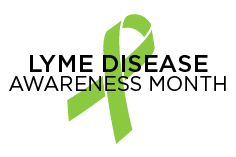The link between oral health and Lyme disease
Posted on June 1, 2023 in Healthy You

The warmer months are an optimal time for Iowans to get out and enjoy the best outdoor activities the state has to offer, including hikes, camping and bike rides. But when you’re outside, don’t forget to protect yourself from tick bites. Deer ticks can spread Lyme disease, which can pose several health problems – including to your oral health.
Lyme disease is passed through a bite from a tick that is infected with a bacteria. If you have been bitten by a tick and are concerned you may have Lyme disease, knowing the early symptoms will help you determine whether a call to your doctor is in order.
Oral health symptoms of Lyme disease
In 2021, the Iowa Department of Public Health reported 356 cases of Lyme disease in the state.1 People with Lyme disease may experience an array of symptoms. Oral health symptoms might not be the first thing you consider when you think of Lyme disease, but some symptoms of early Lyme disease appear in your teeth and mouth, such as:
- Tooth pain that you can’t point back to a cavity, infection or other teeth problems
- Jaw pain
- Weakness and numbness in your face, usually affecting only one side
Other hallmark symptoms of early Lyme disease include a rash at the tick bite site that eventually begins to look like a bull’s eye. This rash is one of the most common symptoms people experience, with 60-80% of people with Lyme disease reporting a rash.2 Other early symptoms include headache, fatigue, and muscle and joint pain.
It’s important to not ignore these early symptoms of Lyme disease, as getting on antibiotics for Lyme disease soon after exposure can usually fully treat the infection. Without treatment, Lyme disease can lead to significant nerve-related problems, including paralysis, mood changes, and meningitis (swelling of the membranes covering the brain and spinal cord) and encephalitis (swelling of the brain).
Keeping yourself safe this spring and summer
Ticks are most active during warmer weather. The best way to prevent tick bites and Lyme disease is by avoiding wooded or grassy areas. If you are in an area that attracts ticks, the following precautions may help limit your risk for tick bites and Lyme disease:
- Spray yourself, your clothes and gear with insect repellent. Children (but not infants) should also use insect repellent made for kids.
- Wear long-sleeved shirts and long pants that are tucked into your socks or footwear.
- Walk in the center of trails, away from grassy or wooded areas.
- After being in a tick area, check yourself and everyone with you (including pets) for ticks. Pay special attention to the scalp, back of the knee, back of the neck and armpit areas – ticks tend to favor these areas.
- If you find a tick, remove it as soon as you discover it. Safely remove the tick by using tweezers to grip the tick at its mouth, not its body. Pull away from your body, and clean and disinfect the bite site.
- When you’re ready to come indoors, change your clothes and shower.
Spending time outside is a great way to stay healthy. When you know the early symptoms of Lyme disease and keep these preventive measures in mind, ticks don’t have to spoil a great spring and summer in Iowa.
SOURCE:
State of Iowa Department of Health and Human Services
REFERENCES:
Iowa Department of Public Health
State of Iowa Department of Health and Human Services